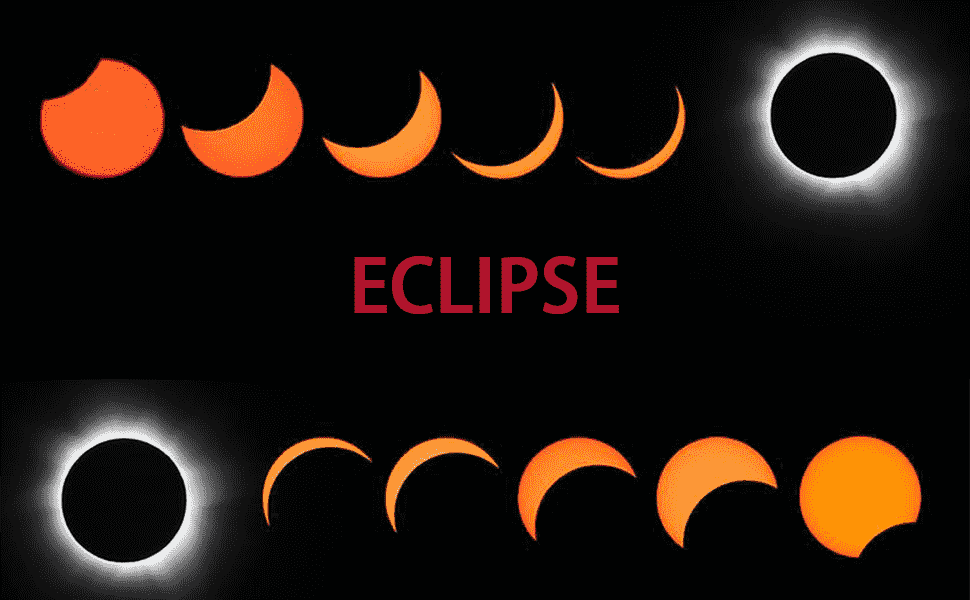Table of Contents

Today, A Special Solar Eclipse - a Total Solar Eclipse
Astronomical phenomena are always fascinating, but the scope of our lives is too large to see them every time, which is one of the reasons why they are worth looking forward to.
Today, April 20, 2023, there will be a special solar eclipse, a total annular solar eclipse, also known as the "fourth solar eclipse". During the solar eclipse, a total eclipse can be observed in some places on the central line of the eclipse belt, and an annular eclipse can be observed in other places, which is called a mixed eclipse, which is mainly determined by the distance, and the timing is very important. It may only appear for a few seconds. If you happen to be in the observable area, you will be lucky!
Because according to historical records, the probability of such a solar eclipse is rare. A total of 228 solar eclipses occurred throughout the 20th century (1901-2000), of which only 6 were hybrid eclipses. There are only 7 mixed eclipses in the 21st century, the last one appeared in 2013, and the next one will have to wait until 2031! This time it will pass the southern portion of the Indian Ocean, Australia, and end in the Pacific Ocean. If you have captured it, please share it with us! Be careful not to look directly at the sun! If you use a telescope to observe, you need to add filters and hoods, to protect your equipment!
Three Type Solar Eclipses
Partial Solar Eclipse
It happens when the Moon comes between the Sun and Earth, but the Moon only partially covers the Sun's disk. The Moon, the Sun and Earth don't align in a perfectly straight line, and the Moon casts only the outer part of its shadow, the penumbra, on Earth. From our perspective, this looks like the Moon has taken a bite out of the Sun. About 35% of all solar eclipses are partial solar eclipses, meaning that they occur more often than total or annular solar eclipses.
It happens when the Moon comes between the Sun and Earth, but the Moon only partially covers the Sun's disk. The Moon, the Sun and Earth don't align in a perfectly straight line, and the Moon casts only the outer part of its shadow, the penumbra, on Earth. From our perspective, this looks like the Moon has taken a bite out of the Sun. About 35% of all solar eclipses are partial solar eclipses, meaning that they occur more often than total or annular solar eclipses.
An annular solar eclipse
It happens when the Moon covers the Sun's center, leaving the Sun's visible outer edges to form a “ring of fire” or annulus around the Moon.Solar eclipses are only visible from within the area where the shadow falls, and the closer you are to the center of the shadow's path, the bigger the eclipse looks. However, in most places and for most of the duration, an annular eclipse looks like a partial solar eclipse. This is also the case for total solar eclipses and for the rare hybrid solar eclipses which have an annular maximum point in some locations and a total maximum point in other locations.
A total solar eclipse
It only occurs when the moon is at a perigee. At this time, the length of the umbra cone of the moon is longer than the distance between the moon and the earth, so that the umbra cone can sweep to the surface of the earth. Because the actual volume of the sun is much larger than that of the moon, a total solar eclipse is usually only visible in a very small area on the earth, because the umbra of the moon is only a small point to the sun.
The moon and the earth drag a shadow in the direction away from the sun under the sunlight. The moon swept across the ground, creating a solar eclipse. A solar eclipse always appears on the first day of the lunar calendar.
In addition, we are developing a sun camera, and it will be available soon, follow us for the latest news!


Jia Mei
+33 788702193